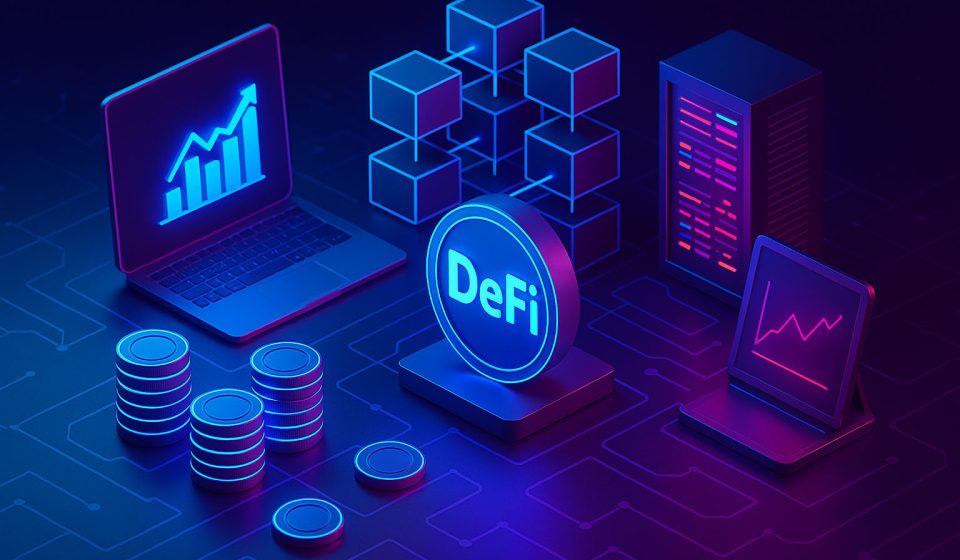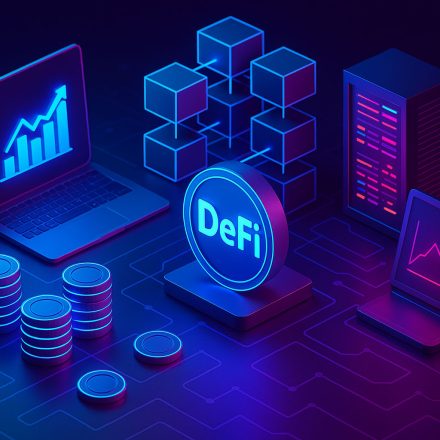
💱 Top DeFi Platforms Changing the Financial Landscape
Decentralized Finance, or DeFi, is one of the fastest-growing sectors in the blockchain space — offering permissionless, transparent alternatives to traditional banking and financial services. But what exactly are DeFi platforms, and which ones are leading the way in 2025?
Table Of Content
In this guide, we’ll explore the top DeFi platforms that are reshaping lending, trading, asset management, and more — without banks, brokers, or middlemen.
At BlockchainInsights.org, we help you understand the technologies redefining finance — platform by platform.
💡 What Are DeFi Platforms?
DeFi platforms are decentralized applications (dApps) that provide financial services like lending, borrowing, exchanging, and saving — all on blockchain networks, usually Ethereum or other smart contract-compatible chains.
These platforms run using smart contracts and are:
- Permissionless — no sign-ups or approvals required
- Non-custodial — you control your assets, not a bank
- Transparent — code and transactions are public
- Programmable — new financial products are created without intermediaries
All you need is a Web3 wallet like MetaMask, and you can interact with DeFi from anywhere in the world.
🔝 Top DeFi Platforms in 2025
Here are some of the most trusted and widely used DeFi platforms today, each offering unique features and serving millions of users globally.
1. Aave
Category: Lending & Borrowing
Chain: Ethereum, Polygon, Avalanche, Optimism
Aave lets users deposit crypto assets and earn interest, or borrow against them. It uses a pool-based model and supports flash loans and stable/variable interest rates.
Why it matters: Aave pioneered permissionless lending and continues to lead in liquidity and multi-chain support.
2. Uniswap
Category: Decentralized Exchange (DEX)
Chain: Ethereum, Arbitrum, Optimism, Base
Uniswap is the largest automated market maker (AMM) DEX. Instead of using order books, users trade through liquidity pools.
Why it matters: It revolutionized decentralized trading and liquidity provision with a user-first design.
3. MakerDAO
Category: Stablecoins & Lending
Chain: Ethereum
The protocol behind the DAI stablecoin, MakerDAO allows users to mint DAI by locking up collateral (like ETH). It’s governed by a DAO.
Why it matters: MakerDAO introduced the first decentralized stablecoin widely adopted in DeFi.
4. Curve Finance
Category: Stablecoin DEX
Chain: Ethereum + multiple L2s
Curve is optimized for low-slippage swaps between similar assets (like stablecoins or wrapped tokens).
Why it matters: Its efficiency and high yields make it a DeFi favorite for liquidity providers and stablecoin traders.
5. Lido Finance
Category: Liquid Staking
Chain: Ethereum, Solana
Lido allows users to stake ETH and receive a liquid token (stETH) in return — unlocking yield without locking funds.
Why it matters: It solves Ethereum’s staking lock-up issue and supports DeFi composability with staked assets.
6. Compound
Category: Lending & Borrowing
Chain: Ethereum
Another DeFi pioneer, Compound introduced algorithmic interest rates and was among the first to launch token-based governance.
Why it matters: Compound inspired a wave of DeFi protocols with its tokenomics and lending model.
7. SushiSwap
Category: DEX & Yield Farming
Chain: Multi-chain
Originally forked from Uniswap, SushiSwap added features like yield farming, launchpads, and cross-chain swaps.
Why it matters: It extended DEX functionality and showed the power of open-source DeFi development.
8. Balancer
Category: Automated Portfolio Management
Chain: Ethereum
Balancer lets users create self-balancing crypto index funds with customizable weightings.
Why it matters: It brings asset management and DeFi investing tools into the hands of anyone with a wallet.
9. GMX
Category: Decentralized Perpetual Exchange
Chain: Arbitrum, Avalanche
GMX offers spot and leveraged trading with low fees and deep liquidity — no centralized exchanges involved.
Why it matters: It competes with CEXs by offering derivatives and leverage in a fully decentralized way.
10. Yearn Finance
Category: Yield Optimization
Chain: Ethereum
Yearn automates yield farming by moving funds between DeFi protocols to maximize returns with minimal user input.
Why it matters: It made passive DeFi investing easier for non-technical users.
🔐 Are DeFi Platforms Safe?
DeFi offers powerful tools, but also comes with risks:
- Smart Contract Bugs — Exploits can result in loss of funds
- Impermanent Loss — A risk for liquidity providers
- Rug Pulls & Hacks — Especially with unaudited or anonymous projects
To stay safe:
- Use audited platforms
- Don’t invest more than you can afford to lose
- Read documentation and avoid suspicious tokens
🔗 Want to Learn More?
Check out our article:
“What Is DeFi? A Simple Introduction to Decentralized Finance”
https://blockchaininsights.org/what-is-defi
📝 Final Thoughts
DeFi platforms are transforming the way we interact with money. Whether it’s lending, trading, saving, or investing — they give users more control, transparency, and access than ever before.
At BlockchainInsights.org, we’ll continue to explore the platforms leading the charge in building a decentralized financial future.









